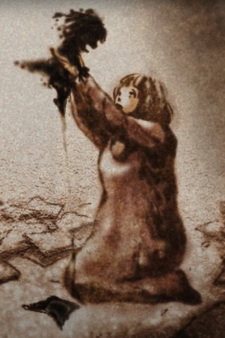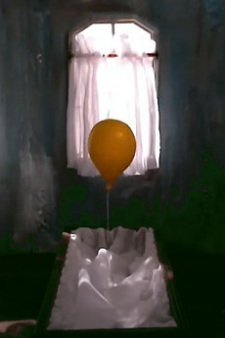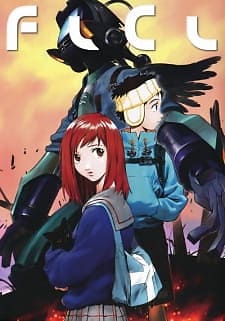Mar 12, 2015
Band of Ninja is a 1967 manga film from experimental live action film director Nagisa Oshima. It’s not a mistake I didn’t say animated since there is not a single moving image in the film. Oshima filmed manga stills attempting to give the illusion of animation through basic filming techniques like quick cuts and plain cinematography. Resulting in failure from its own execution from attempting to cover a large story without the proper length to accomplish it being rushed consistently in the story department.
Band of Ninja immediately piles up the plot in its first thirty minutes. The story begins in 1560 during a prolonged time
...
of great upheaval in Japan known as the Sengoku Period (c.1467 - c.1573). The central characters are Kagemaru (Rokko Toura), a dashing but mysterious ninja who seems to have the ability to magically appear and save the day when a situation seems impossible; Jūtaro Yūki (Kei Yamamoto), who seeks to avenge the slaughter of his father and restore himself as master of Fushikage Castle; Akemi (Akiko Koyama), Jūtaro’s love interest and secret sister of Kagemaru; and the baddie, Oda Nobunaga (Fumio Watanabe), the evil daimyō and nemesis of Kagemaru, who seeks to unify Japan through violence and oppression. In two hours this film tells all of these stories, and a couple subplots jumping between them leisurely. Try to imagine around twenty manga volumes worth of material badly condensed into a two hour film and you’ll understand the feeling of seeing Band of Ninja.
It’s non-stop storytelling doesn’t allow the viewer to catch their breath on anything. Whenever it switches between characters it further diminishes attachment towards them over time. Regularly going to a completely random character, characterizing them, and then ignoring them going onto another character. You’ll be left scratching your head wondering how a simple story about revenge ended up with a scene where a large number of rats are eating people or another scene where Kagemaru talks to a king with his decapitated head. Simply expecting you accept all the odd occurrences without earning it. Sorting out the different anthology stories, some of which don’t connect becomes a chore as it keeps them piling up. Together, these several different storylines don’t create a cohesive narrative, let alone a compelling story.
Some of the material is delivered well. There is a small subplot that focuses on a warrior being raised in the woods by animals and adjusting to the way of civilize living. How it’s handled is through a montage chronicling his growth into adulthood being one of the few moments where justice is done to the source material. Developing the character, showing his conflict, and overcoming it on his own come across clearly. However, such moments can’t make up for the often left lingering plot threads before eventually getting to them sporadically. They lose value in their quality when not given the proper focus. Which instead of being an exception it's the rule.
On the technical side, the direction is alright since the camera only captures the stills of the Ninja bugeicho manga. It never feels like the camera cuts off any panels drawn by Noboru Okamoto (know by his pen name Sanpeo Shirato) so nothing becomes lost in the way Okamoto art is shown. Okamoto artwork is preserved as he originally drew them. For example, speed lines function to signify the speed or velocity of a moving object or character within the motionless panel of comics. Shirato's original drawings for Ninja bugeicho are filled with speed lines, and Oshima faithfully preserves instead of erasing and replacing them with animated movements. Another example of faithfulness to Okamoto’s artwork is in a scene depicting a pivotal duel between the ninja character Hotarubi and the samurai character Jutaro, the speed lines fill the space within a panel. The film retains these lines as it cuts between the tightly framed close-ups that depict the swift sword of Hotarubi mercilessly amputating Jutaro left arm. The resulting impressions of velocity and conflict emanate from the graphic of densities and compositions, rather than from the actual movements of characters and objects.
The simplest technique like panning across a manga panel makes a still image visually interesting. Almost as if the camera is sweeping across a nicely drawn landscape. Added with some top tier sound effect (ranging from wind blowing, clashing swords, fire burning, etc.) and the atmosphere in the drawing comes to life. There were even certain moments in the film where the editing shine; in particular a sword through precisely time editing imitated animation for a brief moment.
These minor visual flair lose their effect after an hour. While the way the camera shows an environment changes, characters will remain still at all time. Limited by its own execution it eventually runs out of techniques to implement. This is actually where voice acting hurts the experimental film. More than half of the film have characters speaking through various emotions, but cuts corners by not changing characters facial expressions to match the voice actors' performances. In retrospect hurting the connection between the images and the delivery from the voice actor.
Voice acting is top notch in general and only viewable through English subtitles. With so many characters in the film it’s amazing not a single actor gives a bad performance. Shoichi Ozawa narration brings allot of life into the film as well being an emotive storyteller. His vocal performance creates the right atmosphere when entering or exiting a scene. There’s plenty of voice actors in the film each of whom do a good job delivering the material than how the film director chose to tell it.
The music is composed by Hikaru Hayashi and his score is average. There’s Japanese choir singing, mellow violin, bombastic trumpets, flutes, and orchestral pieces. With the exception of the main theme use to open the film the music is forgettable. Most of the tracks are stuck in the moment, which has no variation how a musical piece is played ending up with simplistic music. However, they do liven up the film series of stills whenever use.
Band of Ninja isn’t a film I would recommend seeing even if the material was animated in the shape it is. The experiment of filming manga stills isn’t captivating here due to the large scope story being undermined by a rush pacing. Neglecting time to properly develop hurting its own desire to tell a compelling story being noticeable, but gets bored shifting to another character leisurely. For a film whose entire existence is a risk the only noteworthy aspect about this film is this is the closest director live action film director Nagisa Oshima came to entering the field of animation and the way it was made. Losing substance when translating the manga onto film. Instead of being an achievement in experimental filmmaking in the field of animation, Band of Ninja is instead a small footnote in the vast history of animation.
Reviewer’s Rating: 4
What did you think of this review?
Nice
 0
0
Love it
 0
0
Funny
 0
0
Confusing
 0
0
Well-written
 0
0
Creative
 0
0Show all





























